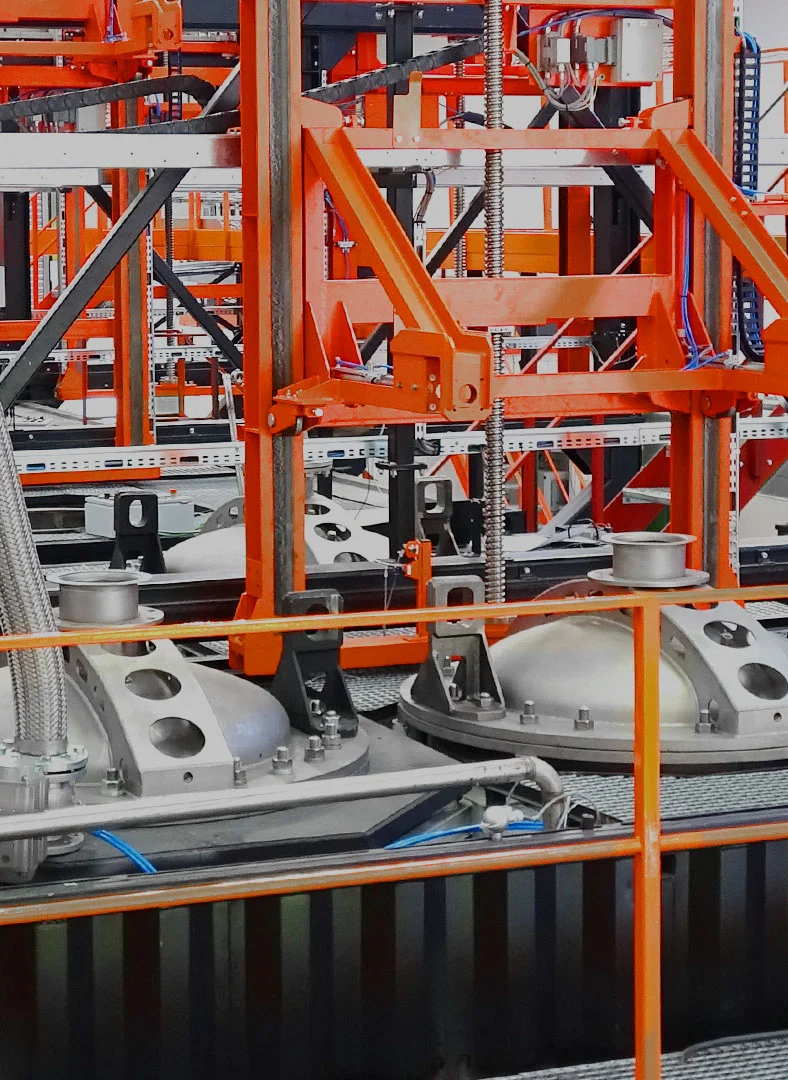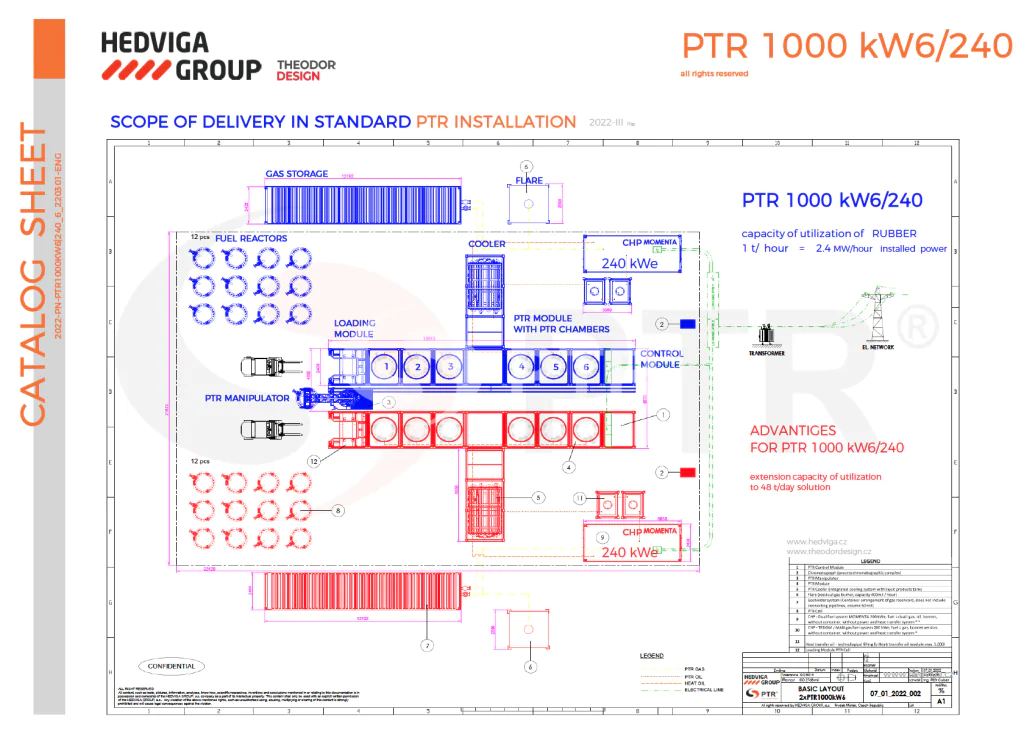The basic idea of PTR technology as a complex solution is to take advantage of the potential of the slow process of thermal decomposition of various kinds of raw materials containing organic substances and produce products - fuels, further used in energy units.
Input materials (raw materials), which are used in the PTR technology
- rubber material, tires
- RDF (refuse derivede fuel)
- plastics, PE, PP, HDPE, LDPE as sorted plastic mixtures
- biomass, agricultural waste
- sewages sludge
- contaminated soil
- electro-waste
The slow thermal decomposition is an ongoing process in closed fuel cells without air access. The fuel cells are filled with input organic raw material, then the each cell is sealed and placed in a PTR module where in the following 2-3 hour* process a thermal conversion of the input material is processed into 3 output fractions: gaseous, liquid and solid.
*NOTE: The process time for each input material is different, herein a given example of rubber material.

The actual process of the thermal decomposition takes place in the temperature range from 350 to 500 °C in sealed fuel cells, which is a basic difference between PTR technology and other technologies such as pyrolysis retorts.
The aim of the PTR solution is to effectively utilize different input materials for getting solid, gaseous and liquid products of stable parameters, which have additional material and energy potential.
The products of the PTR decomposition process are also further exploitable
1. In the area of fuels such as gaseous and liquid fuels for propulsion of gas or dual cogeneration units as well as solid fuels for boiler rooms or also as fuel stabilizers
2. In the area of special chemistry and agriculture as sorption material in filters as well as various fertilizers in agriculture
Products are certified for specific use as products or as fuels, and can be described as follows:
Gaseous fraction* – serves as a fuel for gas cogeneration units or generators, i.e. for the production of electricity. Parameters of the gaseous fraction: Q = 30 MJ/m3, when the content of organic substances in the input material is at least 60% (particular parameters of the output fractions – fuels are determined during initial measurements, for a particular input material according to the investor´s requirements).
*NOTE: Fuel parameters are derived from test samples of rubber material, which, however, according to the origin and age may vary (up to 5%).
Liquid fraction* – serves as a commercial fuel for energy use, as well as a fuel for a dual cogeneration unit or a generator. Parameters of the liquid fraction: Q = 34MJ/kg, when the content of organic substances in the input material is at least 60% (particular parameters of the output fractions – fuels are determined during initial measurements, for a particular input material according to the investor´s requirements).
*NOTE: Fuel parameters are derived from test samples of rubber material, which, however, according to the origin and age may vary (up to 5%).
The advantage of the PTR technology is the positive energy balance. The production of energy (electricity and heat) exceeds its own consumption by at least 80%. Thanks to its own heat utilization in the PTR system, it is possible to effectively reduce the overall power consumption.




